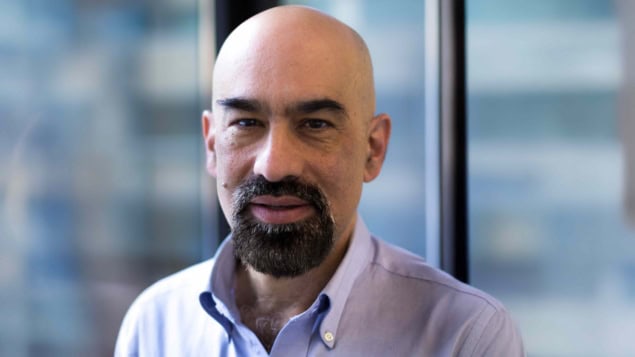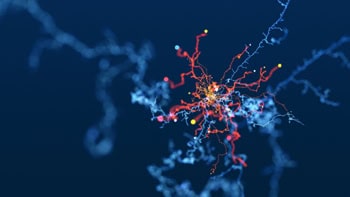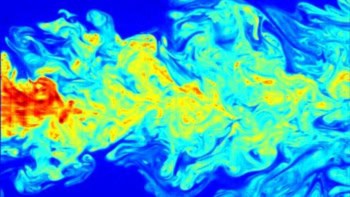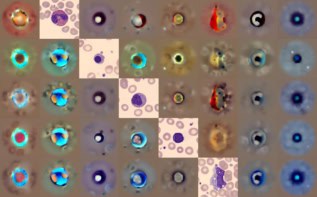Princeton University astrophysicist David Spergel, founding director of the Center for Computational Astrophysics at the Flatiron Institute, talks to Michael Banks about plans to make New York a major centre for computational science

What is the Flatiron Institute?
The Flatiron Institute is a newly opened private research institute that has an annual budget of $80m from the Simons Foundation – a non-profit organization that supports basic research. The institute aims to advance scientific research through computational methods, including data analysis, modelling and simulation. It is located in an 11-storey building in New York City and occupies three floors so far, but the institute will eventually expand to all eleven.
Where did the idea for the institute come from?
The genesis of the idea was developed by US mathematician and philanthropist James Simons and the Belgian physicist and mathematician Ingrid Daubechies from Duke University, who thought that an institute dedicated to computation – and especially to the creation of computational tools to process today’s large datasets – would help different areas of science.
How did you get involved?
I was asked to put together a half-day programme last year about computation in astrophysics. We had speakers on topics from galaxy formation to black holes and we also discussed how to structure an institute that was dedicated to computing in astrophysics. After the workshop, Simons took me into his office and asked me if I wanted to lead a department focusing on astrophysics. It was a big surprise and I didn’t expect it. I accepted and since then we have been developing the vision for the institute.
Are you still at Princeton too?
I joke that I spend half my time at Flatiron and the other two-thirds at Princeton University, where I am still a professor leading a group of eight people.
What is the make-up of the institute?
When fully complete, it is expected there will be about 250 people working in four scientific departments, each of which will have around 60 researchers. There is the Center for Computational Astrophysics (CCA) that I lead as well as the Center for Computational Biology (CCB), which is led by Leslie Greengard from New York University. The third department – the Center for Computational Quantum mechanics – will be run by the French physicist Antoine Georges who will arrive in September. The fourth department has yet to be finalized. We also have a Scientific Computing Core co-led by Ian Fisk and Nick Carriero that will support the four scientific departments by developing algorithms and the necessary infrastructure.
What is the status of the Center for Computational Astrophysics?
The idea was that an institute dedicated to computation would help different areas of science
Currently, the CCA has about 20 people made up of postdocs and senior scientists and we are in the process of recruiting more researchers. The idea for the institute is that each department will also have professional programmers who help the scientists with their investigations. We haven’t employed any yet, but we soon will. My focus is first getting the scientists in place so we can define what problems to tackle. Yet those scientists will already have significant computational abilities.
What science will the CCA do?
There are two avenues in astrophysics that we are working on: simulations and big data. The next set of advances in astronomy will require an understanding of complex multi-scale physics and large astronomical datasets and it is the CCA’s mission to develop the computational tools needed for these calculations, simulations and analyses.
Can you give any examples?
In simulations, we aim to do research in planet, star and galaxy formation, the cosmic microwave background and gravitational-wave astronomy. We aim to focus on challenges that are too big for a single person to take on. On the data side, we will work on the huge amounts of data generated by the European Space Agency’s GAIA mission, which has assembled the most detailed 3D map ever made of our Milky Way galaxy by cataloguing more than a billion stars. We will also work on data that is produced at the Simons Observatory, which is located in the Atacama Desert in northern Chile.
Are you collaborating with other departments at Flatiron?
Yes, there are great opportunities to work with other departments, especially in aspects such as scientific visualization. Just walking around the institute you notice similar equations on the wall and we are looking to set up regular meetings to discuss where we can work together.
When will the centre be complete?
The building work will be complete in around 18 months’ time. The CCB is likely to have a full department within the next three years, while it will take the CCA and the other two departments around five to six years to be complete in terms of personnel. The hope is that when it is fully complete, Flatiron will make the New York area a major centre for computational science.



